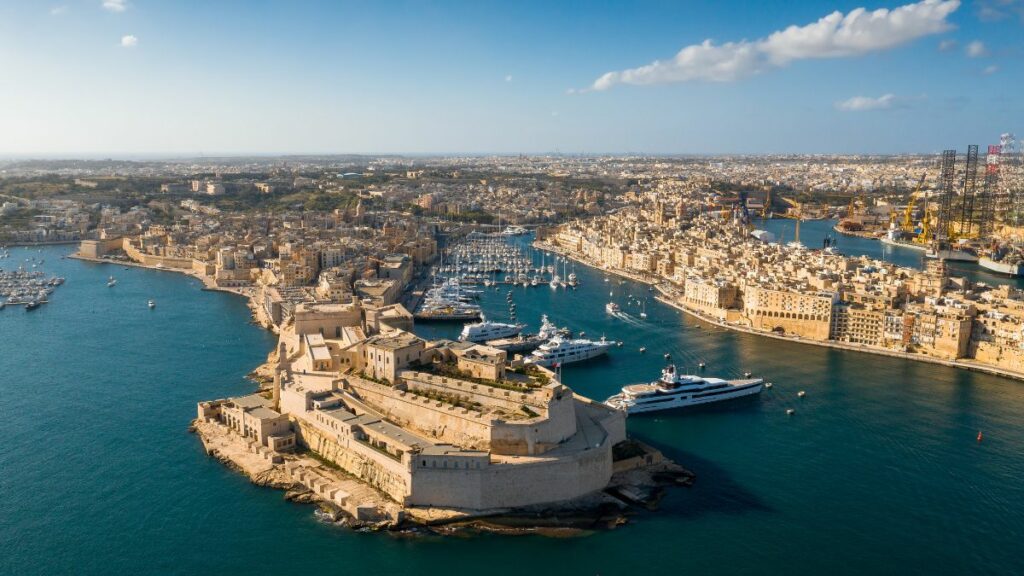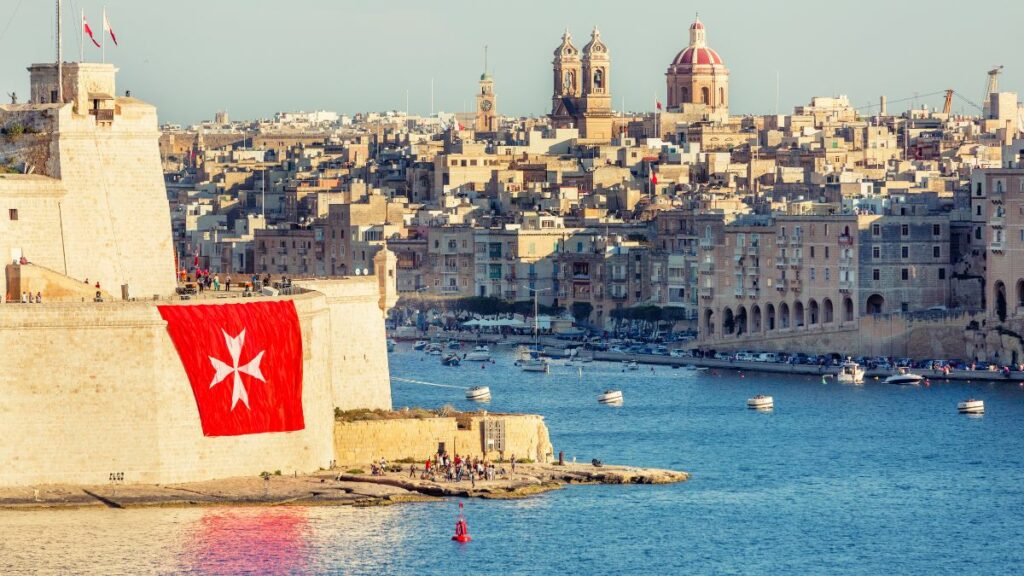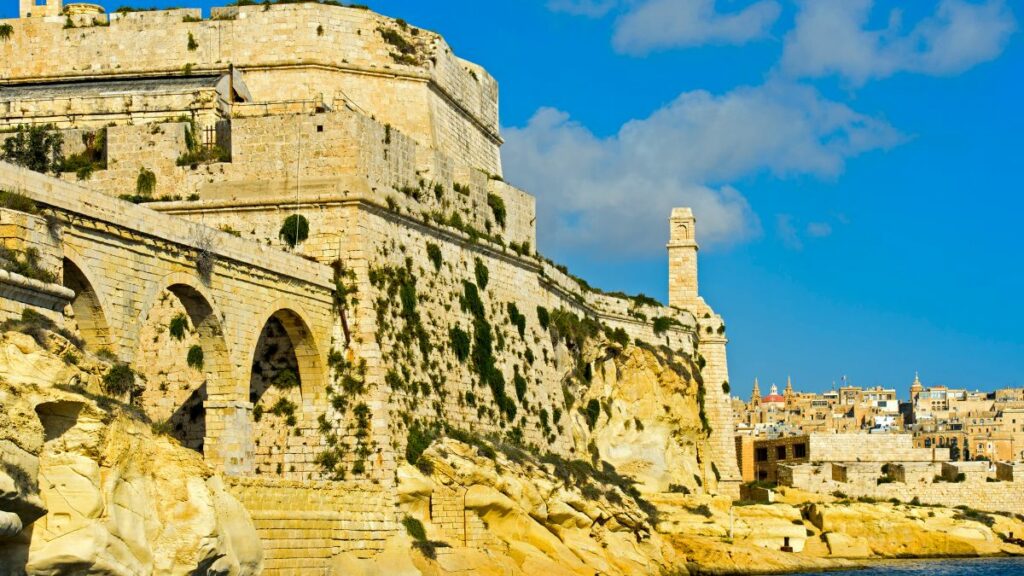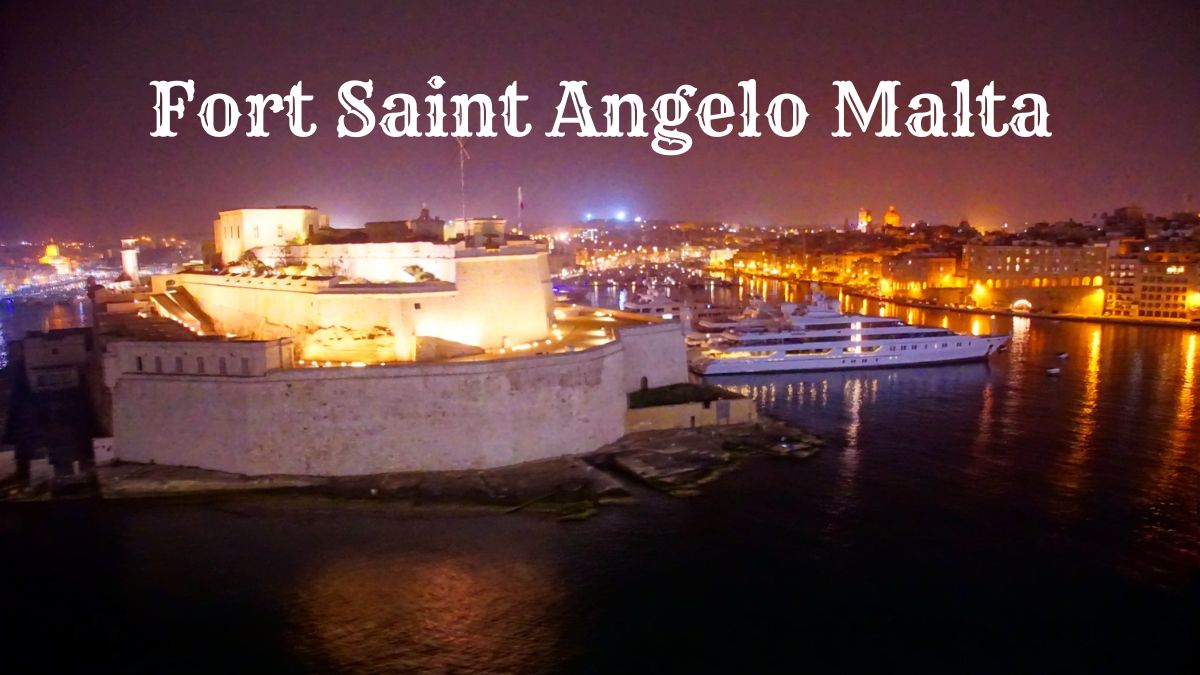Fort Saint Angelo, often called a “stone frigate” due to its impenetrable presence, stands proudly at the end of the Birgu Peninsula, commanding a strategic position at the centre of the Grand Harbour of Malta.
This formidable fortification is deeply interwoven with the history of the Maltese Islands, serving as a guardian and a symbol of authority throughout the ages.
History and Evolution of Fort Saint Angelo in Malta

The fort’s origins date back to the medieval period, but it gained considerable prominence during the rule of the Knights Hospitaller, also known as the Order of St. John.
The knights fortified the structure, transforming it into a key defensive point against invaders, particularly during the Great Siege 1565. Fort Saint Angelo was pivotal in safeguarding the Maltese archipelago during this time.
Military Enhancements by Carlos de Grunenbergh
Fort St. Angelo’s architecture and defenses, including formidable gun batteries, were significantly enhanced under the guidance of the military engineer Carlos de Grunenbergh.
His designs contributed to the fort’s reputation as an impregnable military site throughout the centuries.
The Fort’s Durability Through Conflicts
Despite its strength, the fort has not been immune to the ravages of war and has suffered considerable damage at various points in its history.
Nevertheless, it has been restored and preserved, reflecting warfare’s changing needs and technologies.
British Era and World War II
During the British period, the fort was known as HMS St Angelo and continued to play a vital role in defending the harbours of Malta, especially during World War II.
Fort Saint Angelo as a World Heritage Site
Today, Fort Saint Angelo is a bastion of military heritage and a part of the UNESCO World Heritage Sites that recognize its historical and cultural significance.
A Living Museum of Maltese History
As a heritage site, Fort Saint Angelo invites visitors to explore its grounds and to witness the layers of history that have shaped the Maltese Islands.
Each stone tells a story of battles, governance, and the lives of those who manned its ramparts, making it an essential site for anyone seeking to understand Malta’s strategic value in the Mediterranean and its resilient spirit.
Fort St. Angelo has a storied past, marked by its strategic importance and architectural transformations. From its medieval roots to its contemporary role, this fortification has been pivotal in Malta’s defense.
Medieval Foundations
The first mention of Fort Saint Angelo dates back to the medieval period, referencing Castrum Maris (Castle by the Sea). Situated at the tip of the Birgu Peninsula, it served as a focal point for military operations due to its strategic positioning.
Knights of Saint John

The fort saw critical enhancements with the arrival of the Order of Saint John in the 16th century.
Under their governance, it was extensively fortified and expanded, becoming the order’s headquarters and the seat of the Grand Master.
It played a major role during the Great Siege of Malta in 1565. The influence of Carlos de Grunenbergh is notable, whose designs were instrumental in the structure’s evolution into a bastioned fort.
British Era Transformation
In the 18th century, the fort underwent a substantial transformation under the British Era. It was renamed HMS Egmont, becoming a vital military installation, and saw action during the Second World War.
Post-war, it experienced major reconstruction to meet the needs of the British Army.
Contemporary Status
Today, the Maltese Government maintains Fort Saint Angelo, with funding assistance from the European Regional Development Fund.
More recent works have focused on restoration and making the fort accessible to all visitors, including those who are wheelchair users.
The fort is a prominent historic site on Malta’s Tentative List for UNESCO World Heritage status, signifying its ongoing legacy and cultural significance.
Explore More: Historic Forts in Bermuda
Architecture and Features

Fort Saint Angelo’s architecture reflects its historical evolution over many centuries. This section discusses the fortification’s design, military and ceremonial attributes, and ongoing cultural significance.
Fortification Design
Fort Saint Angelo, originally a bastioned fort, displays robust fortification features attributed to designs by Carlos de Grunenbergh. Its design includes a series of artillery platforms tailored for defense against naval and ground attacks.
The upper part of the fort, comprehensively fortified, features large ashlar blocks that have withstood the test of time and warfare.
Military and Ceremonial Elements
This fort has played a key role in Malta’s military history, holding great importance during numerous conflicts.
Its strategic placement has facilitated the mounting of sizeable artillery pieces, which are critical in controlling and defending the Grand Harbour.
The Sovereign Military Order of Malta has left its mark through various military and ceremonial elements.
The infamous Egyptian Pink Granite Column is notable. It stands as a substantial memorial to the fort’s strategic utility to the islands.
Cultural Legacy
Fort Saint Angelo’s cultural legacy is rich with historical narratives. It has hosted some of the most notable prisoners, including the renowned artist Caravaggio.
The Chapel of St Anne within the fort adds a religious dimension to the site, tying in ecclesiastical history with military prowess.
Continuous restoration efforts have shaped the fort’s current appearance, ensuring that its history remains respected and preserved for future generations.

Cory is a website owner and content creator who enjoys fishing, history, coin collecting, and sports, among other hobbies. He is a husband and father of four.
Romans 15:4 For whatever was written in former days was written for our instruction, that through endurance and through the encouragement of the Scriptures we might have hope.

